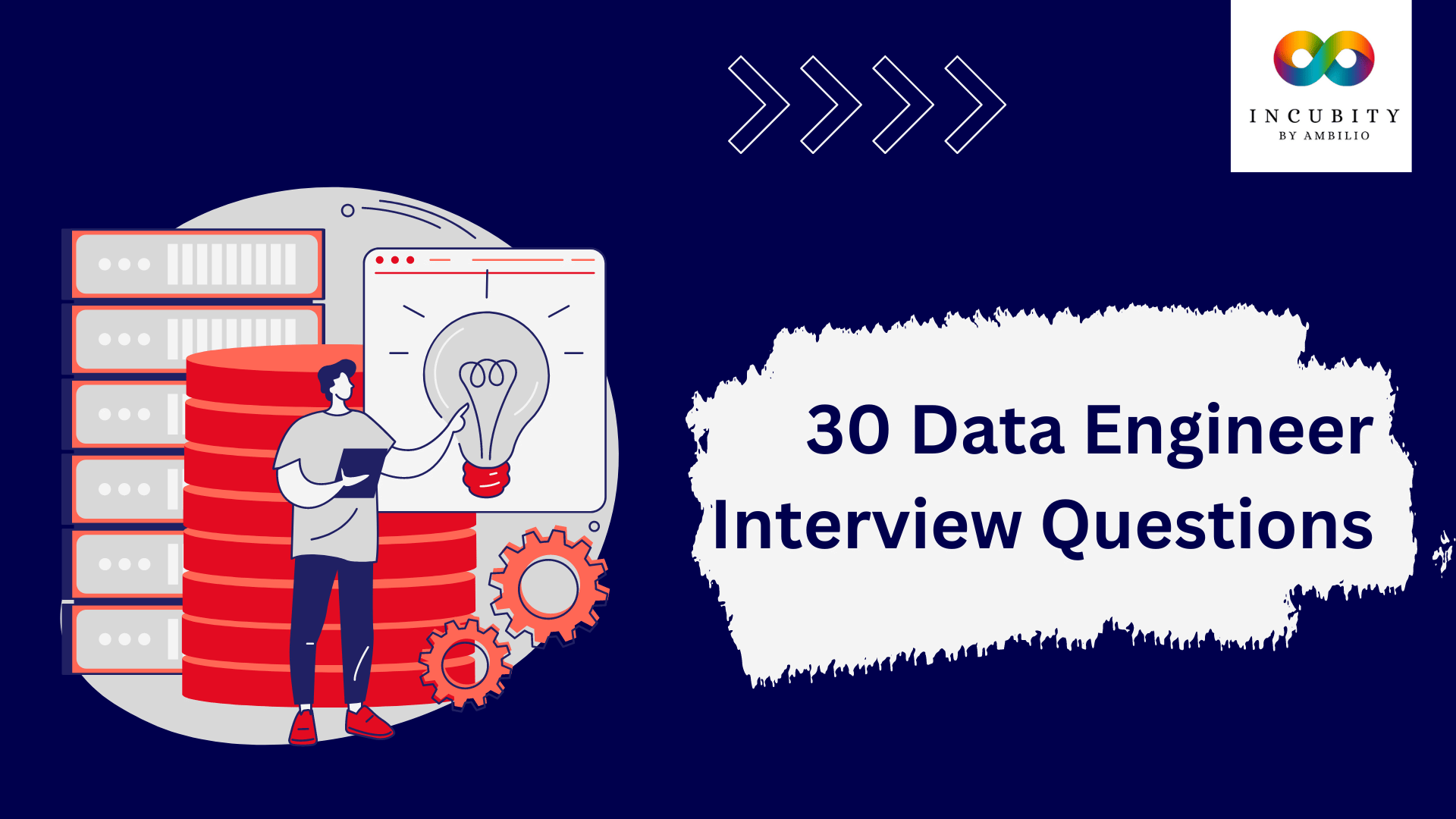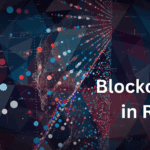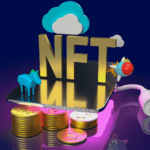A data engineer is responsible for designing, building, and maintaining the infrastructure that supports data storage, processing, and analysis. They work with large datasets, often in real-time, and use tools like Hadoop, Spark, and SQL to create data pipelines and ETL processes. Data engineers are also involved in data modelling and database design, as well as managing the scalability and performance of data systems.
To crack data engineer interviews, you should have a strong understanding of databases, storage systems, pipelines, and computer science fundamentals. You should also be familiar with data engineering concepts and tools like ETL, data streaming, distributed systems, and cloud technologies. We present here a curated list of the top 30 data engineer interview questions with answers that will help you in preparing for data engineering based interviews.
30 Data Engineer Interview Questions with Answers
1. How would you design a scalable and fault-tolerant data pipeline?
Answer: I would start by breaking the pipeline into smaller components, such as ingestion, transformation, and storage. Then, I would use distributed computing technologies like Apache Spark or Hadoop to handle large volumes of data. I would also implement redundancy and fault tolerance mechanisms such as checkpointing and data replication to ensure high availability.
2. How would you optimize a database query that’s running slowly?
Answer: I would start by analyzing the query plan to identify any performance bottlenecks. Then, I would look for ways to optimize the query, such as creating indexes, rewriting the query to use better join algorithms, or partitioning the data. I would also consider optimizing the database configuration parameters like memory allocation or buffer pool size.
3. How would you ensure data quality and integrity in a data warehouse?
Answer: I would start by establishing data quality standards and rules, then I would implement data validation and cleansing processes to ensure that data conforms to these standards. I would also use monitoring and alerting systems to identify any data quality issues, and implement data lineage and versioning systems to track changes to the data.
4. What are the advantages and disadvantages of using NoSQL databases?
Answer: The advantage of NoSQL databases is their ability to handle unstructured or semi-structured data with ease, which makes them suitable for handling large volumes of data. The disadvantage is that they may lack some of the features of traditional relational databases, such as strong consistency guarantees and transactions.
5. How would you handle data privacy and security concerns in a data pipeline?
Answer: I would ensure that all data is encrypted both in transit and at rest, and that access controls are in place to restrict who can access the data. I would also implement data masking and anonymization techniques to protect sensitive data, and audit logs to track access to the data.
6. What is your experience with cloud computing technologies like AWS, GCP, or Azure?
Answer: I have extensive experience with cloud computing technologies and have worked with AWS, GCP, and Azure. I have experience designing and deploying cloud-based architectures, as well as using cloud-based data services like S3, Redshift, and BigQuery.
7. What is the difference between batch processing and stream processing?
Answer: Batch processing is a processing method in which data is collected and processed in batches. Stream processing, on the other hand, is a processing method in which data is processed in real-time as it is generated. Stream processing is typically used for time-sensitive applications, while batch processing is used for applications that require more complex processing.
8. How would you design a data model for a complex, multi-dimensional dataset?
Answer: I would use a star schema or a snowflake schema to model the data, as these schema types are well-suited for complex, multi-dimensional datasets. I would also ensure that the schema is flexible enough to accommodate future changes in the data.
9. What are your thoughts on data lakes vs data warehouses?
Answer: Data lakes and data warehouses serve different purposes. Data lakes are used for storing and processing raw data, while data warehouses are used for storing processed data that is ready for analysis. Data lakes are more flexible than data warehouses and can handle a wider variety of data types, but data warehouses provide better performance and reliability for analytical workloads.
10. What is your experience with data modeling tools like ERwin or ER/Studio?
Answer: I have worked with several data modeling tools, including ERwin and ER/Studio. I have used these tools to create conceptual, logical, and physical data models, as well as to reverse engineer existing databases.
11. How would you handle data versioning and change management in a large data warehouse?
Answer: I would use versioncontrol systems to manage changes to the data model and ETL processes, ensuring that all changes are tracked and audited. I would also implement a rollback mechanism in case of errors during the data transformation process, and ensure that all changes are communicated to relevant stakeholders.
12. What is your experience with distributed computing frameworks like Hadoop or Spark?
Answer: I have extensive experience with Hadoop and Spark, and have used these frameworks to process large volumes of data in parallel. I have experience with Hadoop ecosystem tools like Hive, Pig, and Sqoop, and have used Spark for data processing, machine learning, and graph processing tasks.
13. How would you implement data partitioning in a database?
Answer: I would partition the data based on a key that is commonly used in queries, such as date, region, or customer ID. I would also ensure that the partitioning scheme is balanced, so that each partition contains roughly the same amount of data. I would then use partitioning-aware queries to ensure that the data is efficiently accessed.
14. What is your experience with data integration tools like MuleSoft or Boomi?
Answer: I have worked with MuleSoft and Boomi to integrate data between different systems. I have experience with creating integration flows, using connectors to access data sources, and implementing data transformation and mapping logic.
15. How would you handle data consistency and integrity issues in a distributed database?
Answer: I would use distributed consensus algorithms like Paxos or Raft to ensure that data is consistent across all nodes in the database. I would also implement transactional guarantees like ACID to ensure that all transactions are completed successfully or rolled back in case of errors.
16. What is your experience with data visualization tools like Tableau or Power BI?
Answer: I have worked with Tableau and Power BI to create interactive visualizations and dashboards. I have experience with data preparation, data blending, and building complex queries to support the visualizations.
17. How would you handle data replication in a distributed database?
Answer: I would use a replication mechanism like master-slave or multi-master replication to ensure that data is replicated across all nodes in the database. I would also use conflict resolution mechanisms to ensure that updates to the same data item are handled correctly.
18. What is your experience with data streaming frameworks like Kafka or Flink?
Answer: I have worked with Kafka and Flink to process data in real-time as it is generated. I have experience with building streaming pipelines, handling out-of-order events, and implementing windowing and aggregation operations.
19. How would you optimize a data pipeline to handle high volumes of data?
Answer: I would use distributed computing frameworks like Hadoop or Spark to process data in parallel, and partition the data to ensure that it is evenly distributed across nodes. I would also optimize the ETL processes to minimize data movement and implement caching and indexing mechanisms to improve query performance.
20. What is your experience with database tuning and optimization?
Answer: I have experience with tuning database parameters like memory allocation, buffer pool size, and query optimization settings. I have also used tools like query profiling and monitoring to identify performance bottlenecks and optimize queries.
21. What is the difference between ETL and ELT?
Answer: ETL (Extract, Transform, Load) moves data from the source system to the data warehouse, transforms the data into the required format, and loads it into the data warehouse. ELT (Extract, Load, Transform) moves data from the source system to the data warehouse and then applies transformations on it.
22. What is an ETL pipeline?
Answer: An ETL pipeline is a set of processes that extracts data from various sources, transforms it into a desired format, and loads it into a target system. It involves the use of tools and technologies that enable the process to be automated, scalable and efficient.
23. What is Apache Spark?
Answer: Apache Spark is an open-source data processing engine that can process large volumes of data in a distributed environment. It is known for its speed, scalability, and ease of use, and is used for a variety of data processing tasks including data transformation, machine learning, and streaming data processing.
24. What is Apache Kafka?
Answer: Apache Kafka is an open-source distributed event streaming platform that allows for real-time data processing, data integration, and data storage. It is used for building data pipelines, streaming data processing, and real-time analytics.
25. How do you optimize an ETL pipeline?
Answer: To optimize an ETL pipeline, one can use techniques such as parallel processing, caching, and data partitioning. Additionally, optimizing the data model and using efficient algorithms can also help improve performance.
26. How do you ensure data quality in an ETL pipeline?
Answer: To ensure data quality in an ETL pipeline, one can perform data validation, data profiling, and data cleansing. Additionally, implementing automated testing, monitoring and alerting can also help identify and address issues with data quality.
27. What are some of the benefits of using cloud-based ETL tools?
Answer: Some benefits of using cloud-based ETL tools include reduced infrastructure costs, scalability, availability, and flexibility. Cloud-based tools also offer features such as automated backups and disaster recovery, as well as the ability to easily integrate with other cloud-based services.
28. What is AWS Glue?
Answer: AWS Glue is a fully managed ETL service provided by Amazon Web Services (AWS). It allows for the creation and management of ETL jobs that can extract, transform, and load data between various data stores.
29. What is GCP Dataflow?
Answer: GCP Dataflow is a fully managed data processing service provided by Google Cloud Platform (GCP). It allows for the creation of data pipelines that can process and transform large volumes of data in real-time, and can integrate with other GCP services.
30. What is Azure Data Factory?
Answer: Azure Data Factory is a cloud-based data integration service provided by Microsoft Azure. It allows for the creation of ETL and ELT workflows that can extract data from various sources, transform it, and load it into various data stores. It also offers features such as monitoring, logging, and alerting.



